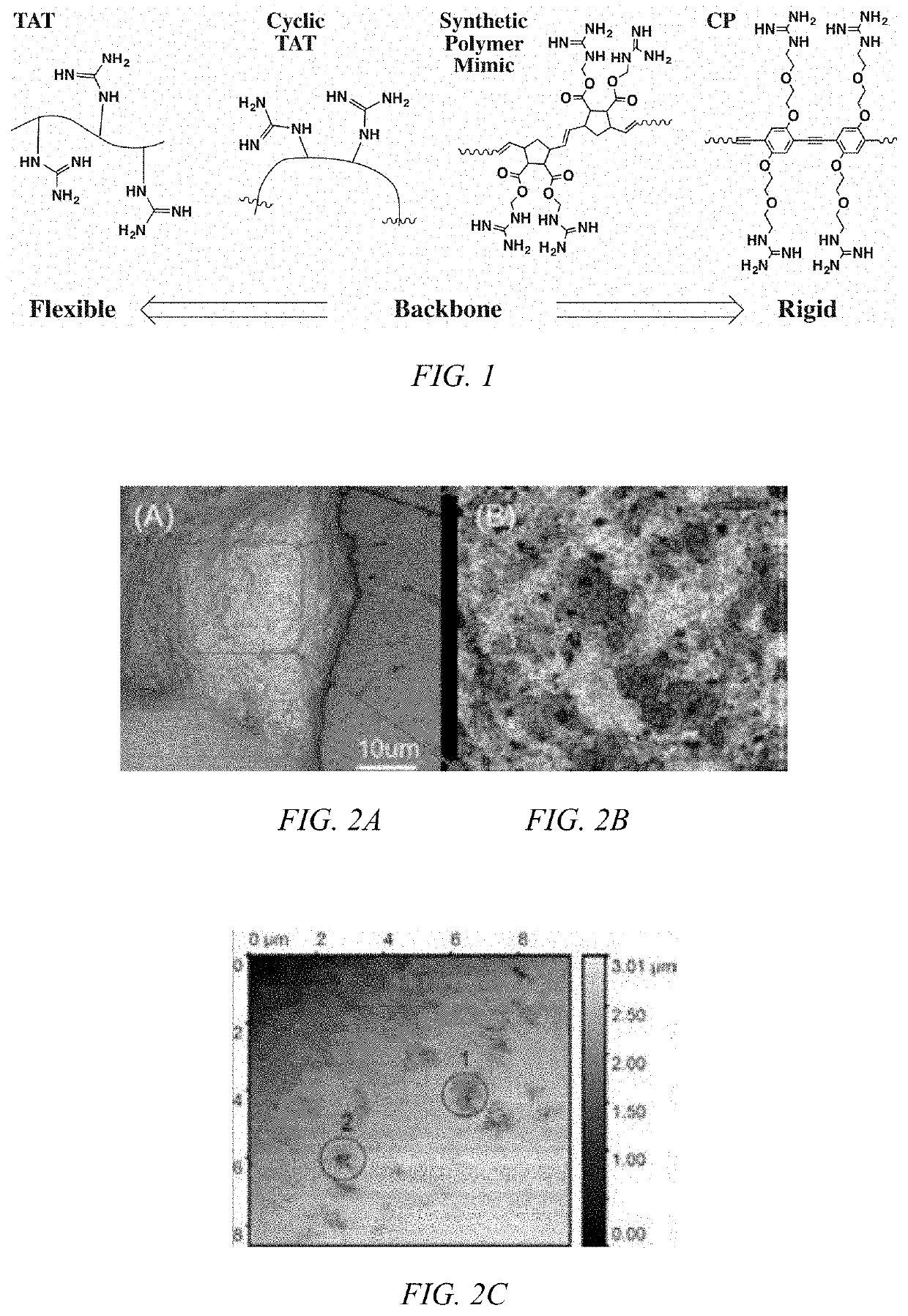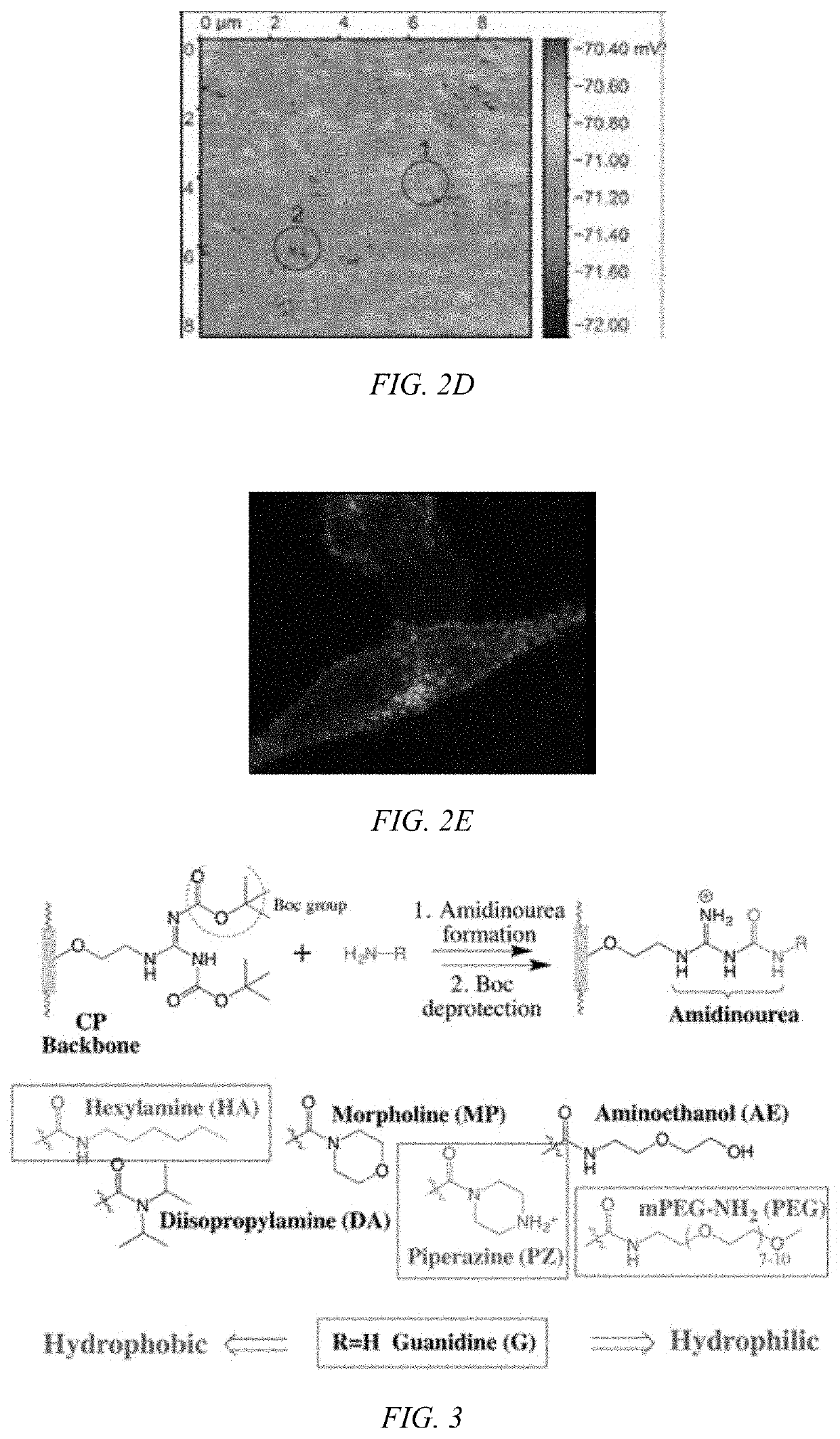Modulated guanidine-containing polymers or nanoparticles
a technology of guanidine and polymer, applied in the field of ovar, can solve the problems of rna molecules being too big to penetrate the cellular membrane, ovca is becoming resistant, and patients are exhausting their treatment options,
- Summary
- Abstract
- Description
- Claims
- Application Information
AI Technical Summary
Benefits of technology
Problems solved by technology
Method used
Image
Examples
Embodiment Construction
Biodegradable CPs can be formed by introducing flexible degradable functional groups along the backbone of the CP that can be used for quantitative labeling of mitochondria. Cellular interaction and internalization of CPs are dependent on the chemical structures of both the backbone and side chains of the CPs. CPs with guanidine units (G-CPs), as disclosed in Moon et al. U.S. Pat. Nos. 9,676,886 and 9,757,410, and incorporated herein by reference, that have molecular weights of ˜14,000 g / mol, enter live cells quickly through the cancer cell membrane. After generating positive charges on guanidine, the resulting polymers are soluble in DMSO, and form nanoparticles in PBS buffer with a hydrodynamic diameter of about 56 nm. Live cells treated with CPs containing various functional groups display surface morphologies at the submicron level that are dependent on the chemical functionalities of the CPs. As can be seen in FIGS. 2A and 2B, the scanning ion conductance microscopy images indi...
PUM
| Property | Measurement | Unit |
|---|---|---|
| temperature | aaaaa | aaaaa |
| hydrodynamic diameter | aaaaa | aaaaa |
| hydrodynamic diameters | aaaaa | aaaaa |
Abstract
Description
Claims
Application Information
 Login to View More
Login to View More - R&D
- Intellectual Property
- Life Sciences
- Materials
- Tech Scout
- Unparalleled Data Quality
- Higher Quality Content
- 60% Fewer Hallucinations
Browse by: Latest US Patents, China's latest patents, Technical Efficacy Thesaurus, Application Domain, Technology Topic, Popular Technical Reports.
© 2025 PatSnap. All rights reserved.Legal|Privacy policy|Modern Slavery Act Transparency Statement|Sitemap|About US| Contact US: help@patsnap.com



